The cryptocurrency market in South Korea presents a complex situation, with strong participation from ordinary users and regulatory challenges.
Author: Min Jung
Translation: TechFlow
Abstract
Driven by a population proficient in technology, the cryptocurrency market in South Korea is characterized by intense retail investment, leading to unique phenomena such as "kimchi premium" and "listing pump".
South Korea's cryptocurrency history is marked by significant regulatory developments, mainly focused on enhancing market integrity and protecting investors.
However, despite significant trading volume and regulatory progress, developers still face challenges in the market due to public perception of cryptocurrencies and lack of relevant regulations.
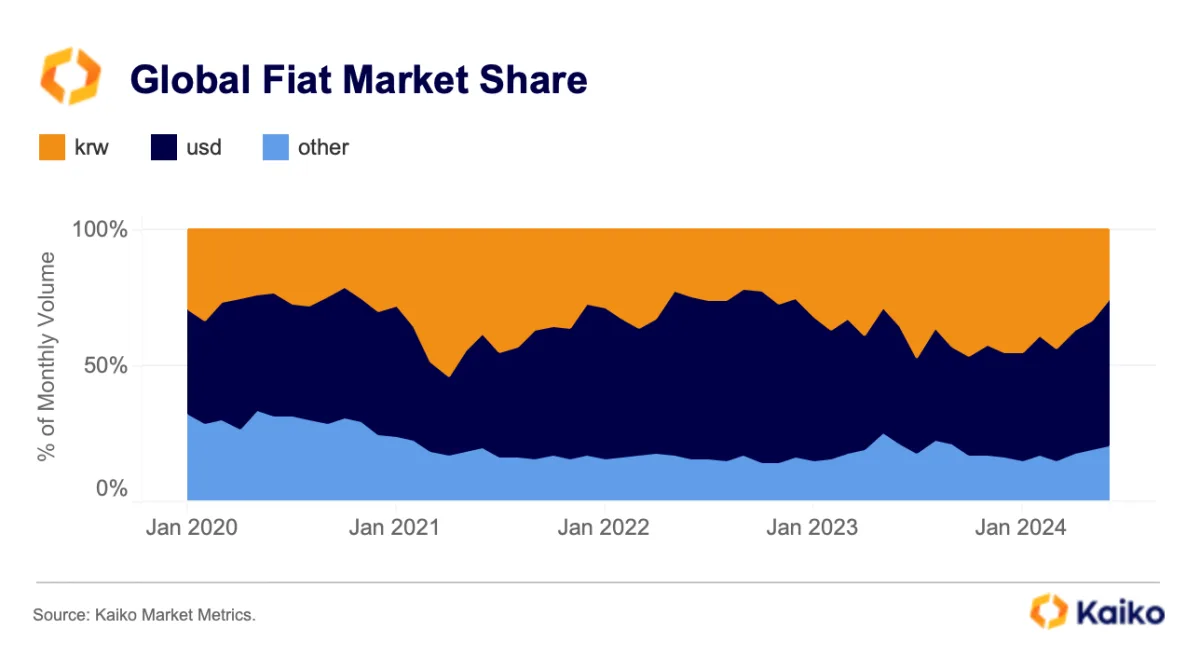
Figure 1: The Korean won consistently ranks in the top two in global fiat currency trading volume
Introduction
As a technology powerhouse, South Korea holds a significant position in the global cryptocurrency field, leveraging widespread internet access and a population proficient in technology. Retail investors in South Korea are highly active, leading to unique market phenomena such as "kimchi premium" and "listing pump," reflecting the enthusiasm of its citizens for cryptocurrency investment. However, these behaviors have also drawn attention from regulatory agencies and market observers, prompting the introduction of new regulations that are expected to impact the global cryptocurrency market.
In this research article, we will (1) review the history of cryptocurrency in South Korea, (2) discuss the current state of the industry, particularly the aforementioned phenomena and new regulations, and (3) introduce some key participants in the domestic market.
History of Cryptocurrency in South Korea
~2017:
- Before 2017, cryptocurrency was not widely popular in South Korea, consistent with global trends. Notable events include Korbit becoming the first cryptocurrency exchange in South Korea in 2013, followed by Bithumb in 2014.
2017:
Bull market: 2017 marked the beginning of South Korea's fervor for cryptocurrency. The bull market attracted millions of retail investors, with Bithumb often ranking first in global daily trading volume, leading to a "kimchi premium" (discussed in detail later) of 30-40%.
ICO ban: In September 2017, the Financial Services Commission (FSC) of South Korea announced a ban on all forms of initial coin offerings (ICOs) to protect investors and prevent potential financial fraud and speculation. Platforms like CoinList are still prohibited in South Korea to this day.
2018:
"Park Sang-ki crisis": In January 2018, Minister of Justice Park Sang-ki announced that the government was considering shutting down all cryptocurrency exchanges, triggering significant market turmoil and a sharp decline in the price of Bitcoin.
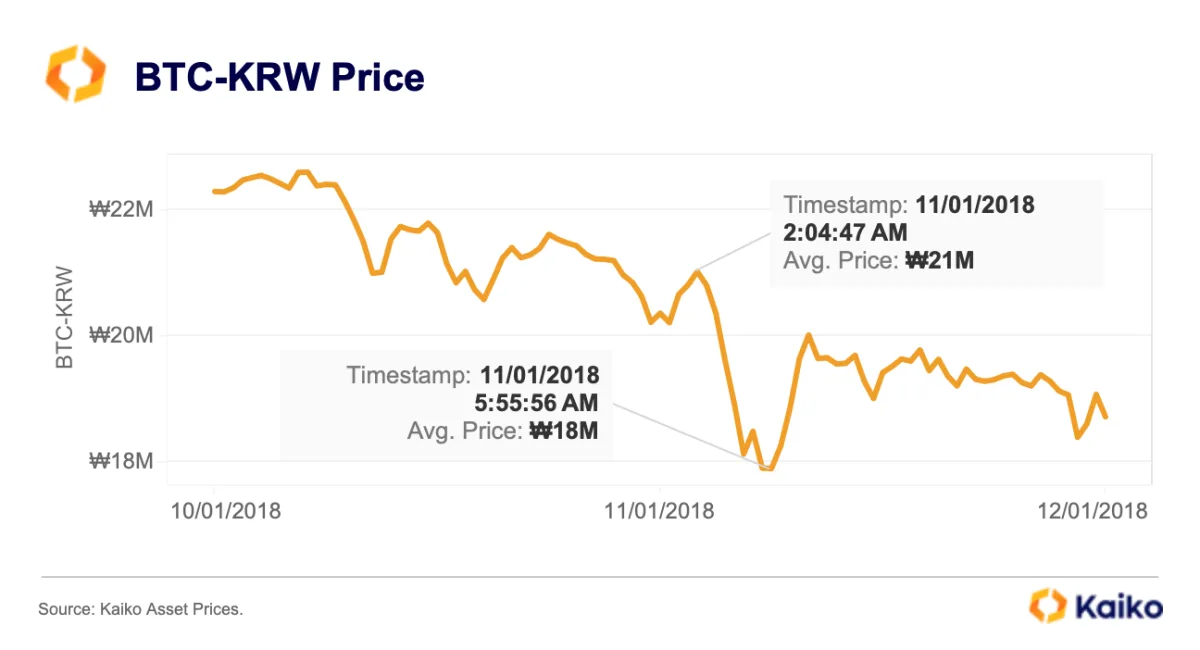
Figure 2: Significant drop in BTC price after his comments
- Real-name trading system: On January 30, 2018, South Korea implemented a "real-name trading system," requiring all cryptocurrency exchanges to collaborate with banks to provide real-name verified accounts for trading. This move aimed to increase trading transparency and prevent money laundering activities.
2020/2021:
Amendment to Specific Financial Information Act: In March 2020, the South Korean National Assembly passed an amendment to the "Act on Reporting and Use of Specific Financial Transaction Information" (Special Act), bringing cryptocurrency exchanges under regulatory oversight. This amendment requires all virtual asset service providers (VASPs) to register with the Financial Services Commission (FSC) and comply with anti-money laundering (AML) and know your customer (KYC) regulations. This law came into effect in March 2021.
After the law came into effect, only 29 out of 63 exchanges successfully registered. Among them, only 5 exchanges (Upbit, Bithumb, Coinone, Korbit, and later Gopax) obtained Information Security Management System (ISMS) certification and real-name accounts, allowing them to operate in the Korean won market.
This law also applies to foreign exchanges, forcing companies like Binance to close Korean language support and P2P services. Currently, the following three principles apply: no support for the Korean won, no Korean language services, and no direct marketing in Korea.
2022:
- Terra Luna crash: In May 2022, the collapse of Terra (LUNA) and its stablecoin UST caused significant turmoil in the global cryptocurrency market. This event had a profound impact on the entire market, especially on Korean investors' psyche. It also raised widespread concerns about stablecoin stability and regulatory oversight. Due to Terra's close ties to South Korea, particularly through its founder Do Kwon and its ecosystem, this crash had a significant impact on the South Korean cryptocurrency market.
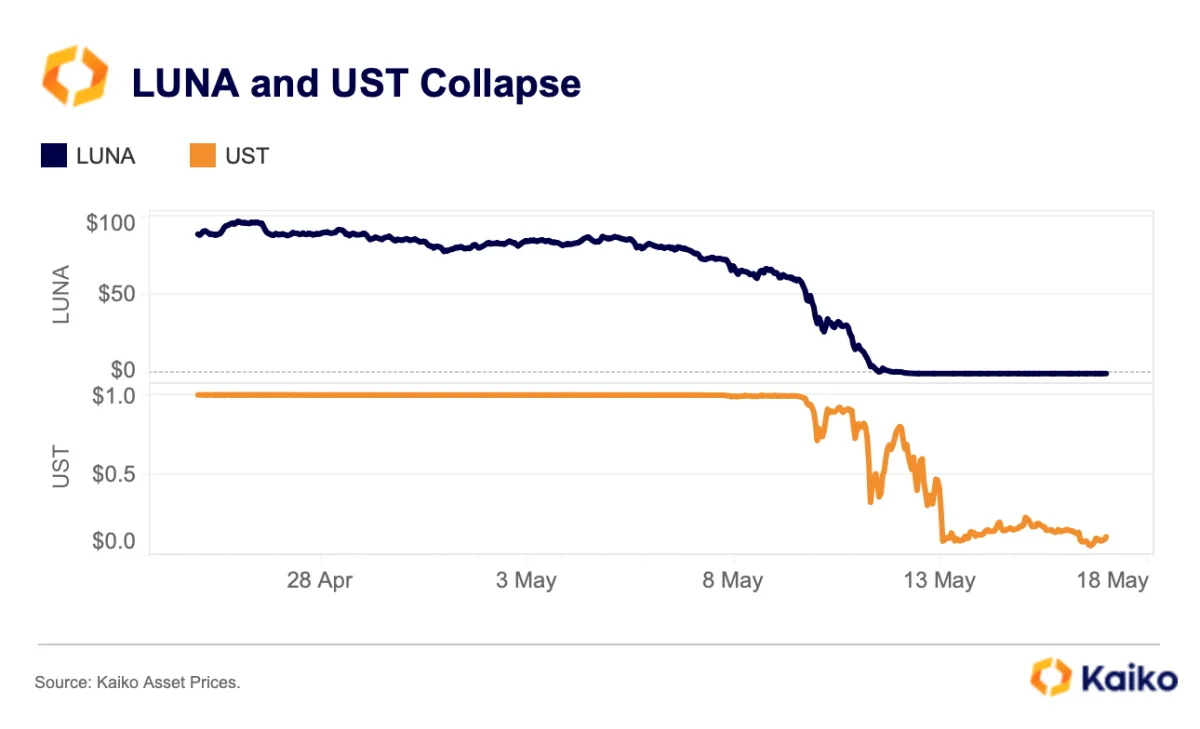
Figure 3: Collapse of the Terra ecosystem
DAXA: The Digital Asset Exchange Alliance (DAXA) consists of major exchanges in South Korea (Upbit, Bithumb, Coinone, Korbit, and Gopax), aiming to strengthen cooperation and establish industry standards to better protect investors and maintain market integrity.
Travel rule: Following the guidance of the Financial Action Task Force (FATF), South Korea introduced the "travel rule" to enhance transparency in cryptocurrency transactions and combat illegal activities.
2023/2024:
Haru Invest/Delio bankruptcy: In 2023, two cryptocurrency digital asset management companies went bankrupt due to suspected Ponzi scheme structures. This event exacerbated negative sentiment in the market following the Luna crash, highlighting regulatory loopholes and investor protection issues, accompanied by allegations of mismanagement and financial irregularities.
Security Token Offering (STO) guidelines: In February 2023, the Financial Services Commission announced guidelines for regulating security tokens under the Capital Market Act. The guidelines focus on determining whether tokens meet securities standards and regulating the issuance and distribution of token securities.
Virtual Asset User Protection Act: The Virtual Asset User Protection Act, passed in June 2023, aims to protect investors by imposing penalties for price manipulation and other market abuses. This is the first phase of a comprehensive bill providing a regulatory framework for digital assets.
2024 and beyond:
Virtual Asset User Protection Act: The aforementioned Virtual Asset User Protection Act will be implemented on July 19, 2024. While this phase focuses on user protection and preventing abusive transactions, the second phase may focus on market access and operations of virtual asset service providers. However, discussions for the second phase have not yet begun, considering the first phase took 20 months to pass. It is expected to take longer to see specific content and a timetable.
Cryptocurrency tax: Cryptocurrency tax has been a key issue during election seasons in South Korea. Since 2022, the implementation of cryptocurrency tax has been repeatedly postponed as part of the government's efforts to attract voters before the general election. As of now, a 20% capital gains tax is scheduled to be imposed on annual earnings exceeding 2.5 million Korean won (approximately $1900) starting in 2025.
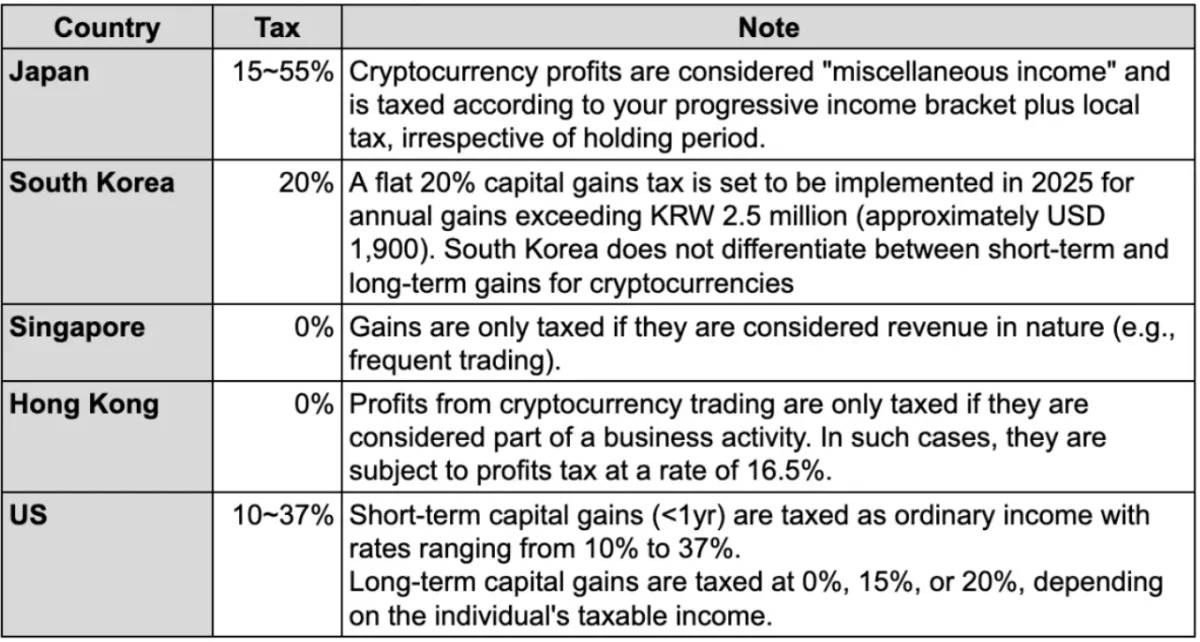
Figure 4: Cryptocurrency tax in various countries
Virtual Asset User Protection Act
Due to the fact that being listed on Korean exchanges has become an important milestone for many cryptocurrency projects, there is a lot of attention on the guidelines and regulations regarding the listing process. Currently, there are no clear regulations in South Korea regarding the listing and delisting of cryptocurrencies on exchanges. The only existing guidelines come from the alliance DAXA, composed of the five major Korean exchanges, which provided an initial listing framework in March 2023. However, these guidelines have been criticized for their lack of clarity, and as a result, DAXA is reworking the guidelines under the supervision of regulatory authorities by adding more details. These new guidelines will be implemented in accordance with the Virtual Asset User Protection Act, which is expected to be a significant development in South Korean regulatory landscape and worth everyone's attention.
Virtual Asset User Protection Act (가상자산이용자보호법)
The Virtual Asset User Protection Act will come into effect on July 19, 2024, focusing on investor activities on exchanges, including:
Protecting customer deposits
Increasing custody responsibilities
Monitoring suspicious transactions
Preventing insider trading
Listing/Delisting Guidelines
Under the supervision of the Financial Services Commission (FSC) / Financial Supervisory Service (FSS), DAXA plans to introduce "compliance best practices" when the Virtual Asset User Protection Act is implemented. These guidelines include listing and delisting standards and are currently undergoing industry feedback. The listing review standards consist of nine requirements, divided into four main areas, with quarterly reviews:
- Issuer credibility
Failure to disclose significant information related to virtual assets, or making arbitrary changes without proper justification.
Failure to verify the main wallet information of the issuer and operator.
- User protection measures
Failure to verify important explanatory materials (whitepaper) prepared by the issuer and operator related to virtual assets.
Lack of on-chain transaction monitoring tools (block explorer).
- Technical security
Unexplained or unresolved security events in virtual assets, wallets, or distributed ledgers.
Failure to verify the token smart contract source code in the distributed ledger, or improper configuration of important event functions.
- Compliance
Issuance of coins, privacy coins, and other virtual assets considered illegal.
Supporting virtual asset transactions that may be used for illegal activities or violate existing regulations.
Any virtual asset related to the above eight items is considered non-compliant and should not be listed. Additionally, financial authorities have introduced a ninth qualitative review standard, including:
The capability, social reputation, and past business history of entities related to the issuance, operation, and development.
Disclosure of significant information related to virtual assets.
Total issuance and circulation plans, changes in business plans, and their transparency and reasonableness.
Appropriateness of access control settings for important event-related functions in token smart contracts.
These evolving guidelines aim to provide a structured and secure environment for cryptocurrency trading in South Korea, addressing current ambiguities and enhancing market integrity.
Where Are We Now?
Retail Frenzy
The retail frenzy in South Korea can be attributed to cultural factors such as the rapid adoption of technology due to fast internet speeds, a culture of risk preference, and the rapid spread of trends in a homogeneous society. Therefore, since 2017, South Korea has been one of the largest markets in the cryptocurrency field, with its exchanges being important platforms for projects to be listed. Even today, Upbit consistently ranks in the top five in average trading volume, usually second only to Binance. This is particularly surprising because Korean exchanges are limited to Korean residents, unlike exchanges targeting a broader audience such as Binance, Coinbase, and HTX.
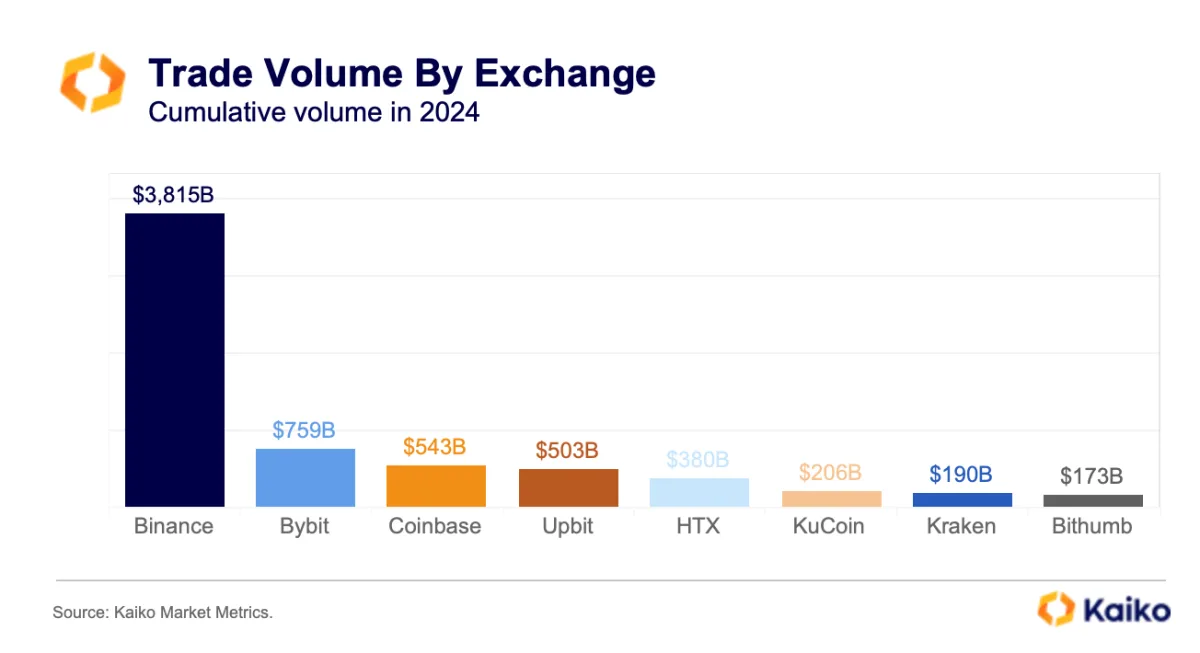
Figure 5: Upbit ranks second in average trading volume
Kimchi Premium and Listing Pump
Recently, the cryptocurrency trading volume in South Korea has surpassed that of KOSDAQ and KOSPI. This phenomenon indicates that cryptocurrencies have deeply embedded themselves in South Korea's financial system. Such strong interest has also led to some interesting market phenomena: the kimchi premium and listing pump.
Kimchi Premium
The kimchi premium refers to the price difference of cryptocurrencies between Korean exchanges and global exchanges. Due to regulatory barriers, arbitrage becomes difficult, resulting in a premium of 2-3%, meaning that the cryptocurrency prices on Korean exchanges are higher. However, during particularly bullish periods, such as in April, this premium can soar to around 14%.
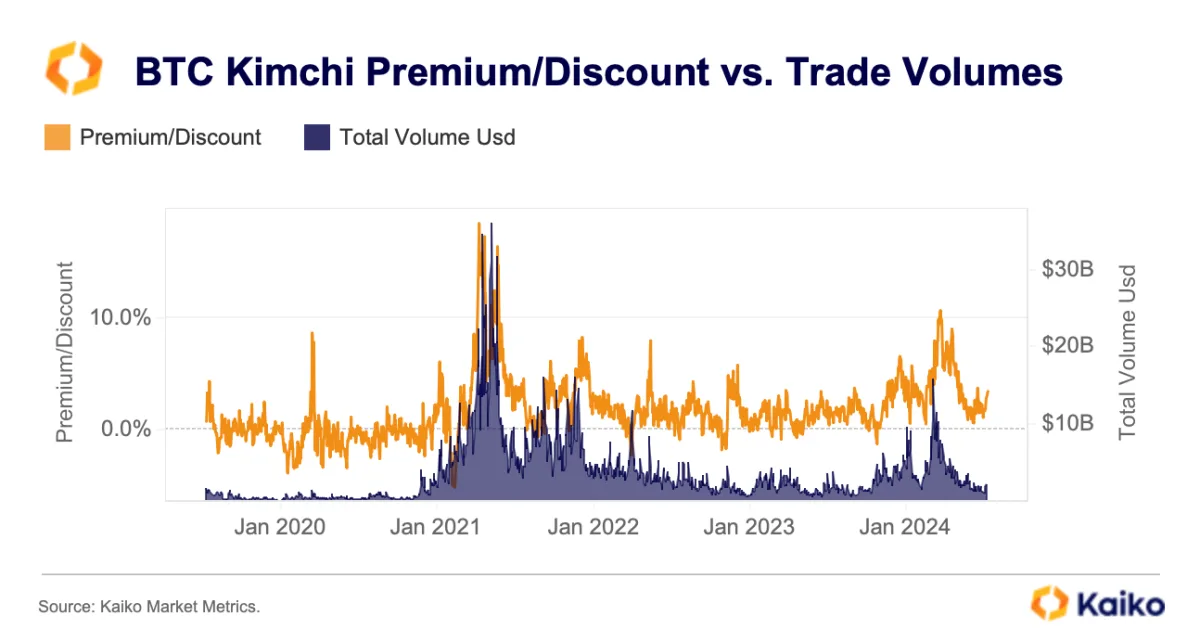
Figure 6: Kimchi premium soaring during high trading volume in a bullish market
Listing Pump
Another interesting phenomenon is the listing pump. When Upbit or Bithumb announces that a project is about to be listed, the price of the newly listed cryptocurrency immediately surges. This phenomenon is influenced by factors such as market capitalization, liquidity, and availability of perpetual contracts. While being listed on Korean exchanges does help enhance liquidity and is generally seen as positive news, the resulting price surge is often short-lived, often being a one-time event rather than a sustainable trend.
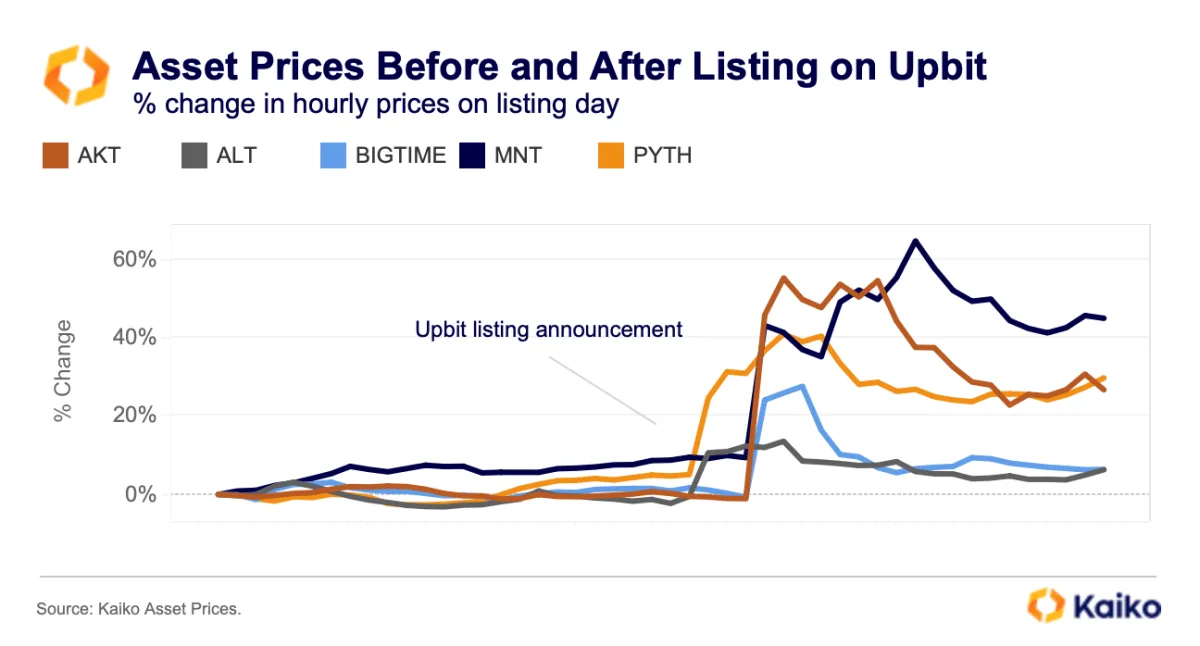
Figure 7: Asset price surge after Upbit listing announcement
However…
Despite progress in regulating exchanges and protecting investors, the web3 operations and developer environment in South Korea face significant challenges. Currently, no significant domestic projects from South Korea have entered the top 100 in market capitalization, which is surprising considering the popularity of cryptocurrencies in South Korea. The main barriers seem to be the public's attitude towards cryptocurrencies and the regulatory uncertainty surrounding web3 projects.
While cryptocurrencies are popular in South Korea, they are more seen as a form of gambling rather than long-term investment in web3 technology. Short-term market behaviors, such as listing/delisting pumps (e.g., price surges before and after delisting announcements), reinforce this perception. Therefore, the market's focus remains on short-term speculation rather than long-term investment based on web3 fundamentals. Additionally, the collapse of LUNA in May 2022 exacerbated negative sentiment towards cryptocurrencies among the public, leading to strict scrutiny of all cryptocurrency projects operating in South Korea by the media. These projects have also become targets for politicians, creating an environment in South Korea that makes sustainable growth difficult to achieve, despite genuine enthusiasm.
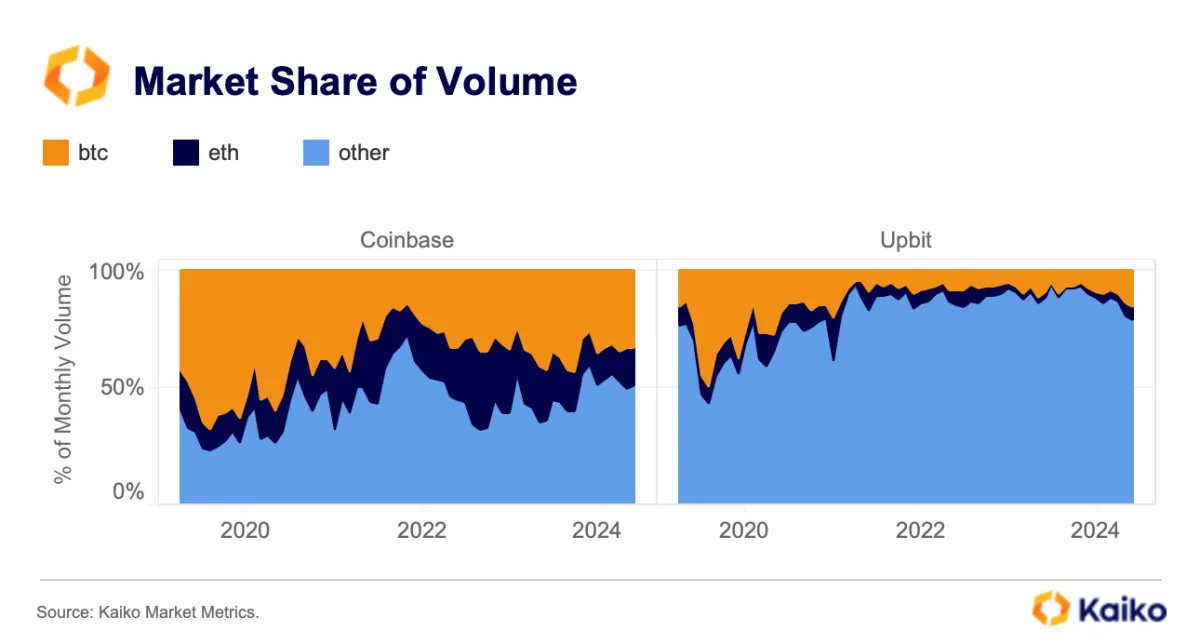
Figure 8: South Koreans prefer altcoins over mainstream coins
Factors Adding Complexity
Unclear regulations also play a significant role in this. While government officials are actively working on developing regulatory frameworks, existing regulations mainly focus on investor protection, with less emphasis on supporting innovation and industry development. For example, the requirements for virtual asset service provider (VASP) licenses only apply to exchanges, wallets, and custody institutions, and the initial phase of the Virtual Asset User Protection Act mainly involves the operational aspects of exchanges. Additionally, the ban on Play-to-Earn (P2E) games in South Korea has led to a complex situation, with leading global Web2 game companies setting up operations in South Korea to access local talent, but their services are targeted at overseas markets. This regulatory ambiguity and delay have forced many South Korean developers to move their businesses to more favorable jurisdictions such as Singapore, despite South Korea's strong technical capabilities, local innovation remains suppressed.
Key Participants in the South Korean Cryptocurrency Market
Exchanges
Although there are no specific regulations, futures trading of cryptocurrencies is generally not allowed in South Korea due to restrictions from the Financial Services Commission (FSC). Therefore, the cryptocurrency market in South Korea is mainly dominated by the five major spot exchanges: Upbit, Bithumb, Coinone, Korbit, and Gopax. These exchanges hold a significant market share, with Upbit and Bithumb accounting for nearly 96% of the total trading volume.
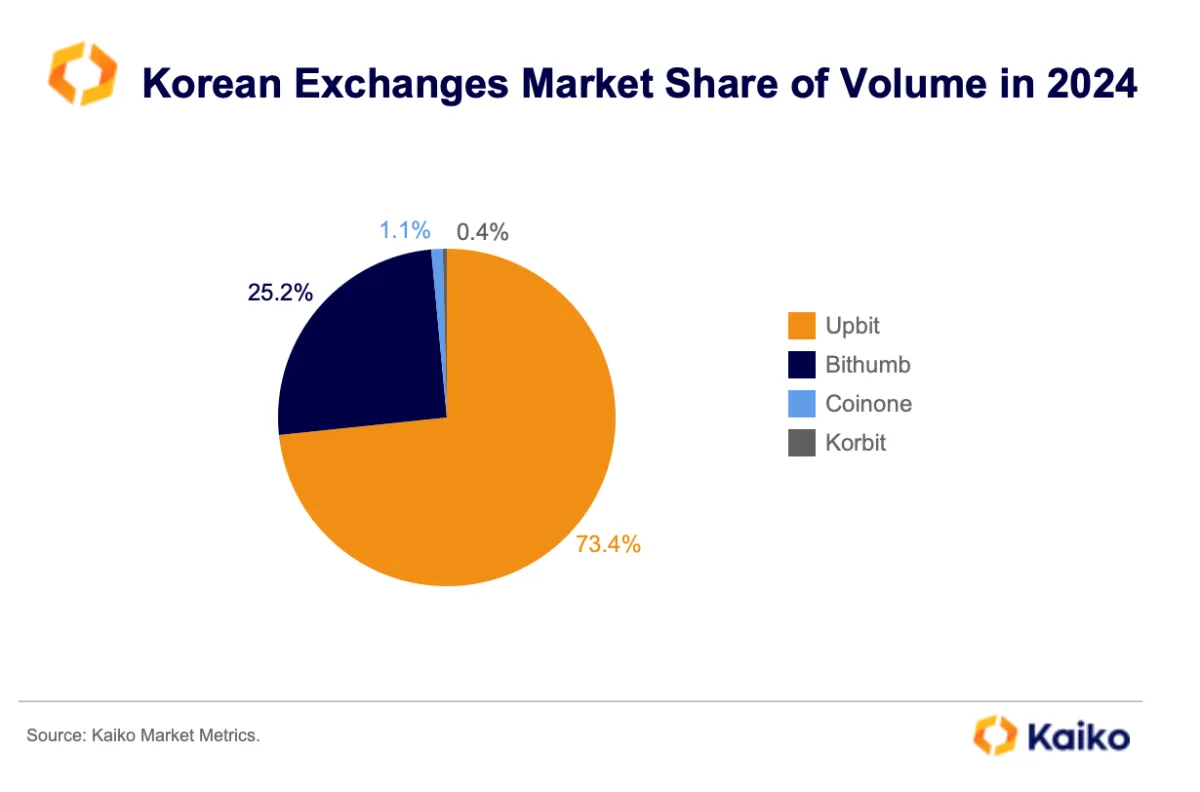
Figure 9: Market share of Korean exchanges as of today
Upbit: Upbit, owned by Dunamu, is indisputably the largest cryptocurrency exchange in South Korea. Dunamu also operates Luniverse (a Web3 product), a stock trading platform, and even a second-hand watch trading platform. Currently valued at approximately $2.5 billion in the OTC market, Dunamu had sales of $2.7 billion in 2023. Upbit now offers KRW/BTC/USDT trading pairs, with the majority of the trading volume coming from the KRW market.
Bithumb: Although the governance structure of Bithumb has always been unclear, the exchange is currently valued at approximately $289 million in the OTC market and has announced plans for an IPO in 2025. Bithumb was a market leader until 2020, but subsequently lost a significant amount of market share to Upbit. Nevertheless, through aggressive fee policies, Bithumb has recently regained market share and continues to play a significant role in the "listing pump" phenomenon.
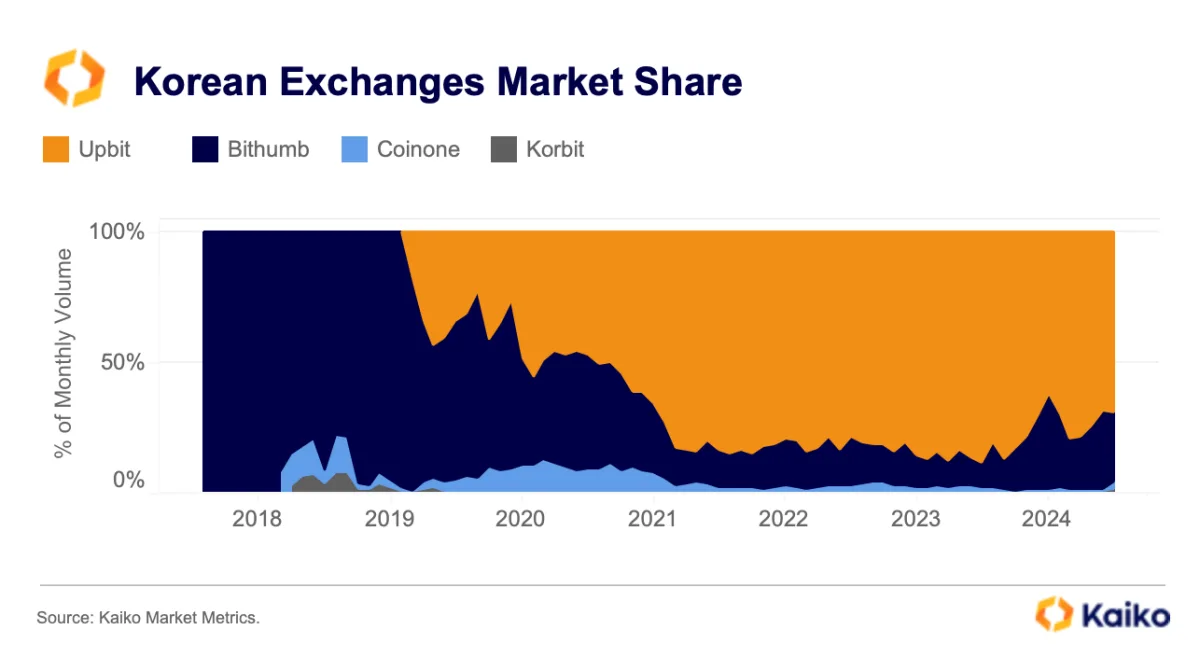
Figure 10: Historical market share of Korean exchanges showing Bithumb's previous position as the top exchange before 2020
Coinone: Coinone holds a market share of 1.1% and was the first Korean exchange to list Ethereum.
Gopax: Binance acquired a 72.26% majority stake in Gopax as a strategic move to penetrate the Korean market. However, due to regulatory uncertainty, the process is still awaiting government approval.
Korbit: Korbit holds a market share of 0.4% and is the oldest cryptocurrency exchange in South Korea.
Projects
i) Kaia
Kaia is a new generation blockchain project formed by the merger of Klaytn and Finschia, driven by South Korean tech giants Kakao (Klaytn side) and Naver's Line (Finschia side). The merger aims to integrate the two blockchain platforms into a unified system named Kaia, derived from the Greek word for "and," symbolizing connection. It is scheduled to be launched by the end of this year and is expected to become a significant "Korean" layer-1 blockchain. This merger is also one of the few mergers and acquisitions in the cryptocurrency industry.
1. Who are you, and what is Kaia?
I am John Cho, the Vice President of Marketing at the Klaytn Foundation, responsible for our global marketing efforts and expanding channels in key regions. Kaia is the new layer-1 superchain launched after the merger of Klaytn and Finschia chains. As a third-generation blockchain project founded by Kakao (a major messaging app in South Korea) and Line (a leading messaging platform with 178 million users in Asia), the merger of their ecosystems was a natural progression, facilitating the creation of one of the largest blockchains in Asia. With Finschia's expertise in application development and Klaytn's unparalleled technical prowess, Kaia is poised to not only be a catalyst for mainstream adoption of Web3 but also a gateway to the major user base, liquidity, and talent in Asia.
2. How do you view the current regulatory status of Web3 operations in South Korea, and what changes do you think are needed to promote innovation in this field?
South Korea's regulatory environment still lags behind in fostering continuous innovation in the Web3 space. Despite having the world's largest cryptocurrency spot trading volume, indicating a significant demand for blockchain technology among the public, legislators have yet to provide clear guidance needed by local teams and developers, leading to talent and brain drain as many teams move to regions with clearer guidance. The main bottleneck currently is the lack of understanding of Web3 technology and trends by regulators and a lack of dialogue with actual developers and teams. To foster innovation and substantial growth in South Korea, developers need clarity; currently, the guidelines are vague and enforcement lacks consistency. Clarity and specificity in regulation can enable the formulation of clearer strategies and goals for our industry.
3. Can you introduce some upcoming updates we can expect from Kaia?
The official launch of the Kaia mainnet is just around the corner. In addition to new technical upgrades and additional features such as native staking delegation and a priority fee mechanism, we also plan to launch a comprehensive ecosystem incentive points system through Kaia Portal. Kaia Portal will be our proprietary service discovery and user front end, allowing users to earn points while leveraging exclusive benefits and participating in on-chain tasks. Through Kaia Portal, our goal is to incentivize user-level contributions to promote growth and initiate liquidity. The Portal will be launched alongside the new Kaia mainnet.
ii) Delabs
South Korea has been a leader in the Web2 gaming space, with major companies like Nexon, Netmarble, NCSOFT, and Krafton dominating the global market. As a result, many individuals from these major game studios, or even entire studios, are attempting to enter the Web3 space, such as Wemade and Nexon. Delabs Games is also part of this trend, being a South Korean game studio and a subsidiary of 4:33 Games. Founded by former Nexon executive Joon Mo Kwon, Delabs Games is showcasing its capabilities in the Web3 space.
1. Who are you, and what is Delabs Games?
I am Hyunmyung Kim, the Chief Marketing Officer of Delabs Games. Delabs Games is a South Korean game studio and a subsidiary of the renowned 4:33 Games, with over 13 years of experience in mobile game development, creating many popular games domestically and internationally. Initially focused on the Korean market, 4:33 Games later expanded to a global audience. Now, through the adoption of blockchain technology, Delabs Games is pioneering the next chapter of gaming. Over the past two years, Delabs Games has been developing three blockchain games: the casual racing game "Rumble Racing Star," the space refugee survival game "Space Frontier," and the Web3 role-collecting RPG "Metabolts." In February 2024, we launched the first racing game "Rumble Racing Star," which received a positive response and reached 10,000 daily active users within five days of release.
3. Why do you think South Korea holds a prominent position in the cryptocurrency field?
South Korea's prominent position in the global cryptocurrency field can be attributed to several key factors. Economic pressures, including high inflation and housing costs, have led many, especially the so-called "N-Po generation," to turn to high-risk investments in search of financial breakthroughs, making Web3 an attractive choice. Despite being the 13th largest economy globally, South Korea's cryptocurrency purchasing power is significant, with Upbit as a major exchange ranking at the top globally in trading volume. Additionally, the country's emphasis on local digital solutions is reflected in successful blockchain projects such as Klaytn and WeMade, highlighting South Korea's technological innovation and significant influence in the global Web3 market.
4. What are your thoughts on the current regulation of Play-to-Earn (P2E) games in South Korea, and what changes should be made?
The cautious Financial Services Commission (FSC) regulations in South Korea restrict P2E games, NFTs, and cryptocurrencies, potentially inhibiting industry growth. Discussions are ongoing regarding NFT taxation and their classification as virtual assets, pending the enactment of the Virtual Asset User Protection Act in July 2024. Similar to Japan, establishing secure boundaries for P2E services is crucial. There is an urgent need for a centralized control tower to coordinate the regulation of various ministries in the rapid development of blockchain technology. This measure is essential to ensure effective management and regulation of these evolving technologies.
- Can you introduce some upcoming updates we can expect from Delabs?
Delabs Games is moving towards a Token Generation Event (TGE) and launching our ecosystem under our core concept of the "Playable Layer." To showcase the core user experience of the "Playable Layer," we are hosting an event called "Ladybug's Journey." This is a point-based incentive program where users can collect and enhance points by completing various tasks, collecting on-chain assets, and climbing the competitive leaderboards. Delabs Games will release a variety of games, from hardcore AAA games to casual games on Telegram, to increase accessibility.
Conclusion
The cryptocurrency market in South Korea presents a complex situation of strong retail investment and regulatory challenges. While South Korea has a highly tech-savvy population, the lack of local blockchain projects reflects barriers in regulation and public awareness. The upcoming enactment of the Virtual Asset User Protection Act is a step towards addressing these issues, aiming to enhance market integrity and provide clearer operational guidelines. However, to truly leverage its technological prowess and market enthusiasm, South Korea needs to create an environment supportive of blockchain innovation, overcome negative public sentiment, and ensure a balanced regulatory framework that encourages long-term investment in Web3 projects for sustainable development. Only through this balanced approach can South Korea establish itself as a global leader in the ever-evolving cryptocurrency space.
免责声明:本文章仅代表作者个人观点,不代表本平台的立场和观点。本文章仅供信息分享,不构成对任何人的任何投资建议。用户与作者之间的任何争议,与本平台无关。如网页中刊载的文章或图片涉及侵权,请提供相关的权利证明和身份证明发送邮件到support@aicoin.com,本平台相关工作人员将会进行核查。




